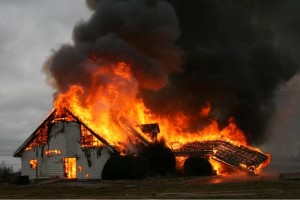 Connecticut Child Dies in Recently Built Home
Connecticut Child Dies in Recently Built Home
A six-year-old girl from Connecticut recently died in a fire in a home built only months ago. Her mother is in serious condition. The incident negates persistent claims made by fire sprinkler opponents that smoke alarms and other safety features “offer adequate protection from fire” and home fire sprinklers are not necessary since “today’s fire deaths and injuries are happening in older homes.”
Built by a local Habitat for Humanity chapter this year using lightweight construction materials and occupied by the family in July, the Connecticut home had at least one working smoke alarm, according to news reports. Moreover, had this home’s construction followed requirements found in all U.S. model building codes—specifically, a requirement to sprinkler new dwellings that has appeared in every edition of these codes since 2009—it should have been sprinklered.
Mirroring action occurring across North America, sprinkler opponents in Connecticut have made a convincing—and oftentimes inaccurate—pitch to state and local decision makers that have kept fire sprinklers out of new homes. “Nobody is dying in new homes from fires,” stated Bill Ethier, CEO of Connecticut’s Home Builders and Remodelers Association, in a 2015 essay penned in response to proposed legislation to sprinkler the state’s new homes. (His full essay is attached to this blog post.) “Sprinklers in new homes will not save the lives proponents claim. “[This technology] is an astronomical cost to save a life.”
“This type of logic is misguided and infuriating,” says Jim Pauley, NFPA’s president and CEO. “Time and again, our data proves the majority of America’s fire deaths are occurring at home, old and new alike. Research also confirms that fire sprinklers are a cost-effective component to new homes that can eliminate these tragedies. They are the solution to our home fire problem. To assume that fire sprinkler requirements are merely an unwanted burden to homebuilders with minimal benefits to society places little value on the little girl who sadly passed away, the more than 2,500 others who die each year from home fires, and the thousands of others injured annually by these incidents.”
Pauley is not alone in promoting safer homes in Connecticut and elsewhere. “You have an 80 percent rate of getting out of a house fire with smoke alarms and sprinklers and only a 50 percent chance with smoke alarms alone, so there’s a big difference there,” Keith Flood, chair of the Connecticut Fire Sprinkler Coalition, told a Connecticut news station following the recent fire. He is currently working with the coalition to secure home fire sprinkler requirements in his state. “Our opinion is that this may have been a different scenario if the house had sprinklers in it.”
